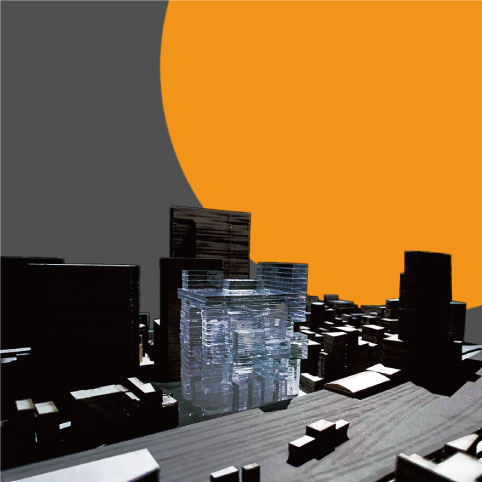OGURA Koshiro

Kabukicho (reprise)
都市の冗長
_Diploma design, 2018
_Awards:
O-okayama Architectural Prize (Silver), Diploma Project 2018 (2nd prize in school)
Hideyuki NAKAYAMA Award, 3 Universities Diploma Design Review 2018
Tsuyoshi TANE Award, 28th JIA Tokyo competition of graduateing students’ work

Kabuki-cho is one of the most prominent entertainment districts in Tokyo. There are many multi-tenant buildings that have bars and restaurants within. But the city government wanted to clean up this area and redevelop some old theatres for Tokyo Olympic in 2020. These redevelopments lead to gentrification and destroy the current lively city culture, though it's also necessary to renew the built environment for the coming natural disasters. This project is an alternative redevelopment plan for one of the biggest theatres in Kabuki-cho.

In Kabuki-cho, there are very interesting characteristic spaces. There are many narrow paths and gap spaces between small buildings. These small and narrow spaces are almost private property actually, but for us visitors, these are not private but public space like a western plaza. So, I focused on these types of spaces in Kabuki-cho and designed a big commercial complex referring the gap spaces.

In Japan, a void space must be needed in almost all of premises from a legal perspective. And the original land readjustment plans relatively small sites so lots of people can own in Kabuki-cho. That is why there are so many gap spaces in Kabuki-cho.
There are many equipments such as emergency stairs and piping equipment in the gap spaces. These equipment support not only buildings which are attached but also a city working well. So I think these gap spaces act as infrastructure spaces in the city.

The skyline of Kabuki-cho are made by various height of buildings. As we can see from this graph, there are some distinguishing classes of height of buildings. Spaces above buildings connect the gap spaces three-dimensionally, those spaces become “urban voids”.


I designed gap spaces following the gap spaces around the site. And these gap spaces I planned will be public space for this building.






